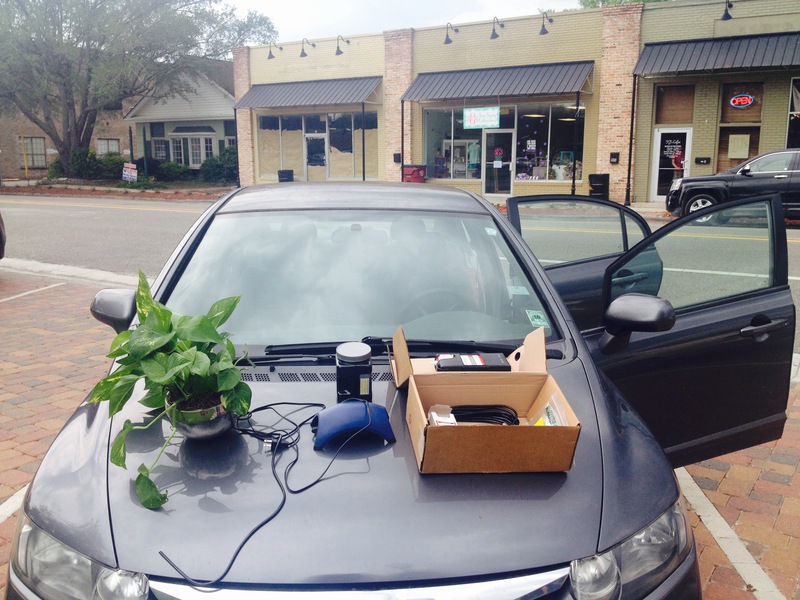
Formaldehyde Test Kit
These formaldehyde testing kits are one part of our multi-pronged [Indoor Air quality monitoring] efforts.
Goals
Our goal is to measure formaldehyde at typical environmental exposure levels found in homes and workspaces that are irritating and potentially carcinogenic over the long-term, a range from 8-600 parts per billion (ppb) or 0.008 - 0.6 parts per million (ppm), but usually below 150ppb. Read more in Formaldehyde Exposure.
We are also interested in short measurement periods, i.e. an hour or less, so that environmental factors such as ventilation, or the operation of a formaldehyde-generating process or appliance can be correlated.
We would like to produce data comparable between sites and control for false positives (other gasses detected by the method). Being able to calibrate the sensors consistently and inexpensively is therefore critical.
Existing Methods
Electronic Monitoring
Inexpensive electronic monitors are usually not very in the .008-.1ppm range most likely to be found in homes, can be difficult to keep in calibration, and often respond to other gasses as well. A review of current electronic sensing techniques is available through the NIH.
Chemical-reaction-based testing
Passive
We've focused on chemical-reaction-based testing as better documented systems. The two most common methods for detecting formaldehyde in the home involve passive collection of the chemical via a badge (8 to 48 hour test time). These methods require samples to be sent back to the lab for analysis. The send-it-to-the-lab model introduces three problems:
- expensive high pressure liquid chromatography is required at the lab (HPLC, which cost ~$30,000).
- the possibility of contamination during transportation and analysis.
- the cost of testing the transportation process for contamination.
In order to ensure the accuracy of a send-it-to-the-lab test you need to purchase two additional tests, known as a “field blank” and a “trip blank,” to ensure that your sample wasn’t contaminated.
- Three active sorbent samples with Home Air Check costs $217.50.
- Three passive badges with ACS costs $123.
not exactly low cost...
active
An alternative to these passive systems is to actively pump air through a sorbent material (30 minutes to 8 hours) that traps formaldehyde. Pumps can be very expensive, from $500-$3000, but the single-use sorbent materials can be inexpensive. @Nshapiro noticed one such published methodology replacing expensive pumps with calibrated aquarium pumps and using Kitagawa 710 formaldehyde detection tubes, which have a detection range of 10ppb-480ppb with +/-10% accuracy, and a test period of 30 minutes, making them close to meeting our ideal testing range.
DIY test considerations
Calibration
rotameter
bubbles
bags
chain of custody & documentation
cards
timestamping
